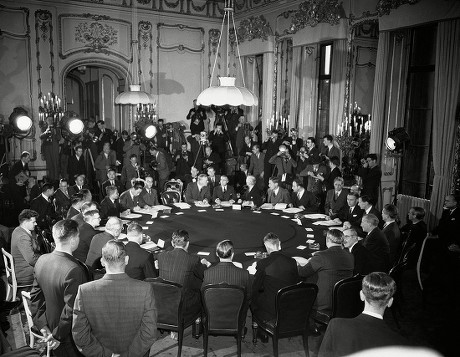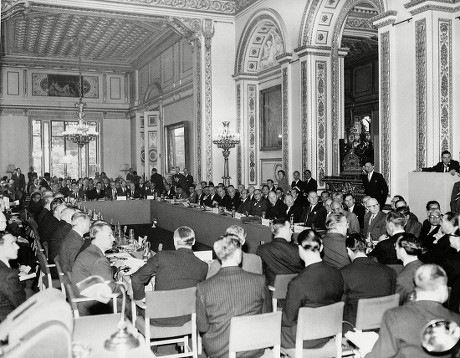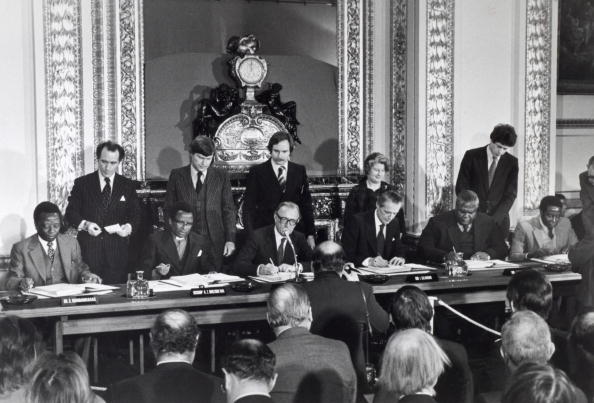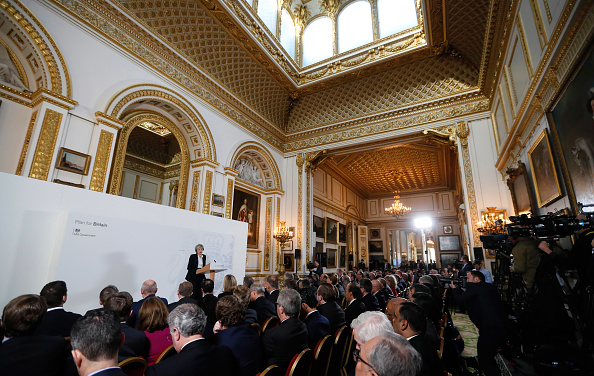Lancaster House
If diplomacy is theatre, then Lancaster House is an impressive stage on which to conduct it.
The building has long served as the backdrop for high-level summits, conferences and meetings attended by the leading political figures of the day.
It has witnessed key moments in international affairs from the Cold War to Brexit, and has given its name to a host of international agreements.

In the immediate aftermath of the Second World War Lancaster House played host to the Foreign Ministers of the big five Allied Powers (Britain, the United States, the Soviet Union, France and China).
Seated around a huge circular table, presided over by British Foreign Secretary Ernest Bevin, they grappled with the problems of peace making in the post war world.
In May 1950, the 12 signatories of the North Atlantic Treaty met to create a permanent organisation for the defence of Europe and North America.
Around a horseshoe table, with US Secretary of State Dean Acheson at the centre, foreign ministers settled the aims, objectives and structure of NATO.

Following the nationalisation of the Suez Canal in 1956 by President Nasser of Egypt, the British Prime Minister Anthony Eden invited representatives from 18 nations to London to discuss how the international community might best respond.
Meeting in the Long Gallery, they agreed to appoint a small committee of five nations to explore avenues of negotiation with the Egyptian government.
Lancaster House played a key role during the era of decolonisation from the late 1950s onwards. Kenya, Malaya, Nigeria and Cyprus are just a few of the countries whose independence was negotiated and agreed at Lancaster House.

Perhaps the most famous set of negotiations was the constitutional conference on the future of Rhodesia, which took place from September to December 1979.
British Foreign Secretary Lord Carrington chaired all-party talks, which included the Prime Minister, Bishop Abel Muzorewa, and Patriotic Front leaders Joshua Nkomo and Robert Mugabe.
The conference ended with the signing of the Lancaster House Agreement and paved the way for the creation of an independent Zimbabwe.
The House has been a regular venue for European, NATO and G7 summits.
The G7 summit in June 1984 saw Prime Minister Margaret Thatcher play host to Ronald Reagan, Francois Mitterrand, Helmut Kohl and the Prime Ministers of Canada, Italy and Japan.
The Heads of State met in the Music Room, Foreign Ministers in the State Drawing Room and Finance Ministers in the Long Gallery.
“Heads in the Music Room,” quipped Margaret Thatcher at a press conference “—very appropriate; hope it is harmony”.

In July 1971, Prime Minister Edward Heath held a press conference at the House setting out the terms for British entry into the European Common Market.
46 years later, on 17 January 2017, Theresa May made a speech in the same room setting out the priorities that the UK government would use to negotiate Britain’s exit from the EU.
Whatever the ebb and flow of international affairs, Lancaster House has seen it all.
